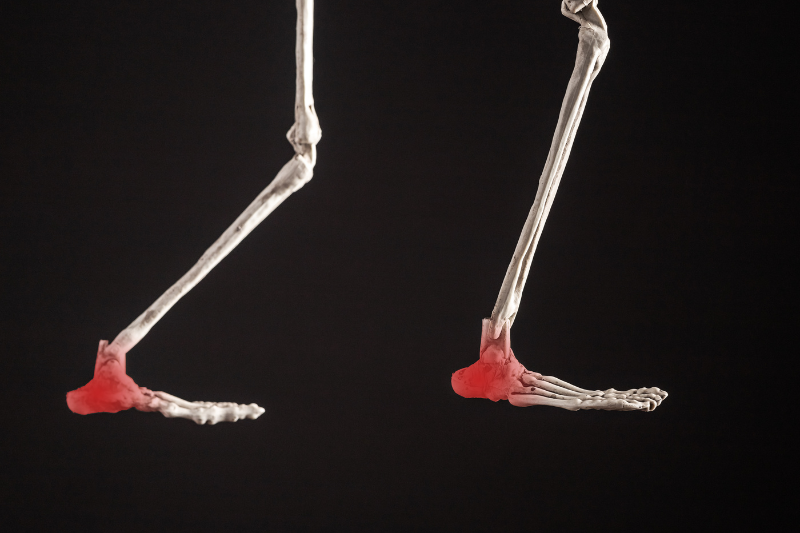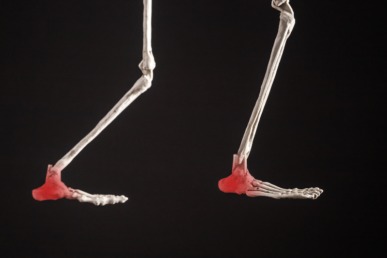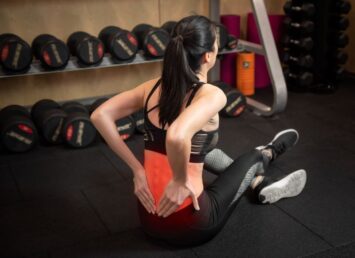Plantar Fasciitis
Our feet are the foundation for all of our upright movements, supporting all of our body weight support and providing balance and stability when standing and moving. So when we have pain in one or both feet, it can drastically affect our daily activities.
The most common foot pain complaint is plantar fasciitis, an inflammation of the thick band of tissue that runs from the top of the heel toward the sole of the foot. One in 10 people will experience pain from plantar fasciitis at some point in their lives.
Symptoms of plantar fasciitis include a sharp, sometimes burning pain in the heel that is often worst first thing in the morning. While it usually, gradually, gets better throughout the day, it is possible to have dull, constant pain all day.
Plantar fasciitis can affect athletes and non-athletes alike for a variety of reasons, but the most common tend to be a lack of strength in the intrinsic foot muscles and poor ankle mobility, specifically dorsiflexion (flexing your toes up toward your shin.) People with a higher-than-normal BMI or who have overly tight calves and hamstrings tend to be more prone.
There are a number of ways sports chiropractic can address these issues. The first line of treatment, after resting the foot as much as possible, is generally to prescribe specific stretching and strengthening exercises for the foot, calf, and hamstring to loosen up and smooth out the fascia and, hopefully, relieve some inflammation. It is important to stretch and strengthen the posterior muscles of the leg as well as the foot, because they are all connected, and tight hamstrings and calves will pull on the heel bone and create excess tension on the bottom of the foot.
Figure Four-Foot Stretch
Sit in a chair with both on the floor. Take your left foot and rest it on the right leg in a figure-four position. With your right hand, pull the ball of your foot (not just your toes) up toward your shin and hold for a few seconds. Relax. Repeat. You should feel a good stretch along the arch of your foot and up your Achilles tendon.
Heel Raises and Dips
Holding onto something or someone for balance, stand with both feet on a stair, curb, or small portable step with your heels hanging off the back. Lift up onto the balls of your feet and hold your heels elevated for three seconds before slowly lowering until your heel is below the step or the curb. Hold that position for three seconds before returning your foot to a neutral position. Repeat five to 10 times. After several days or weeks, graduate to single-leg exercises lifting and lowering one foot/heel at a time.
Standing Calf Stretch
Stand in a slightly lunged (diagonal) position with one leg forward and hands flatly on the wall. Keeping your back heel firmly on the ground, slightly bend your front knee until you feel a stretch in the lower portion of your back leg (calf.) Hold the stretch for 30 seconds and switch to the other leg. Repeat the stretch three times on each leg.
Foam Rolling
Using a foam roller or small, firm ball (lacrosse or tennis ball,) roll with moderate pressure across the bottom of the foot to manually soften and stretch the plantar fascia and the Achilles tendon. You can do this by rolling the foam roller or ball across the foot or rolling your foot across whichever tool you are using.
While many times, plantar fasciitis pain can be dramatically lessened with at-home stretches, severe or repetitive cases might need more serious intervention. DSM Sports Medicine has a variety of non-invasive ways to help your foot function more fully.
- Manual manipulation of the foot
- Soft tissue therapy along the plantar fascia
- Dry needling
- Gait analysis (overpronation can lead to plantar fasciitis)
- Orthotics to temporarily relieve pressure
For athletes, the issues that cause plantar fasciitis can be as troubling as the condition itself. Poor intrinsic foot muscle strength and limited ankle mobility can not only make it difficult to ever reach your full athletic potential, it will also make you much more prone to injury.
Utilizing sports chiropractic therapies to analyze your biomechanics, strengthen intrinsic foot muscles, and achieve better ankle mobility will help you avoid overusing certain muscles, make injury less likely, and improve overall strength and speed.
Regardless of your fitness goals, optimal foot health is necessary to remain active and pain-free. Spending just five minutes a day dedicated to stretching and stretching the muscles of your leg and foot just like you would any other muscle of your body can both prevent and relieve painful conditions like plantar fasciitis.
If you suffer from foot pain, contact Dynamic Sports Medicine to discuss your options.





